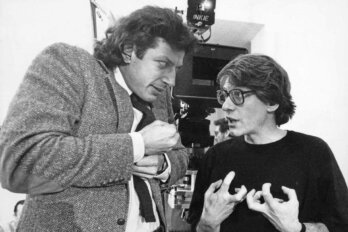
I like tennis. I do. I like clay. I like line judges and I like the tall chairs the umpires sit in. I like ballboys and I like tram lines and I like deuce. I like the feel of the topspin forehand dipping sloopily into the court just short of the baseline. I like the sun shining on a summer sport. I like how ridiculously, nonsensically good the best players are at what they do—how much better they are than even the very very good players, the players who would knock off the best tennis player you know, that guy you met at camp who became a tennis pro in Florida, in minutes.
The bone I pick at is tennis writing. It’s evident that that there’s only so much you can say about tennis, and equally, that it’s now been said. And equally it’s evident that people go on saying it, again and again, a million monkeys at keyboards watching balls sail back and forth. The “tennis essay” as a genre is a unique combination of uselessness and ubiquity, and yet like so many plastic water bottles, it continues to be washed up on the beach of literary journalism. This is to say: writers of the world! Hear my call! Put away your rackets! Other sports are available. It’s time for a moratorium on tennis writing.
Let us briefly itemize the forms that are to be outlawed:
- Profile (semi-critical): The mystifyingly long biographical note about a person of little inherent interest as a human being, even (especially) bearing in mind her/his inconsistent in/ability to occasionally hit a yellow/green ball over a piece of string very hard or very softly—despite having worked solely on this to the exclusion of other pursuits (intellectual, moral) since childhood.
- Tournament Play: The painfully microscopic analysis of three hours of one person hitting balls over a piece of string, at another person who returns the ball, more or less often than not, with a lot of money at stake, described in quasi-Shakespearean terms as a kind of Gotterdamerung—to the incomprehension of most of us, those not invited to the feast.
- Profile (adulatory, erotic): For some reason (The shorts? The sweat? The one-on-one?) it’s considered okay to lustfully salivate after tennis players, male and female, when writing about tennis. Hence the lovingly detailed description of hair, muscles, glistening shoulders, hairy navels. In most other arenas of human activity this would be considered grounds for a court case. In tennis it’s accepted, even encouraged.
- Profile (adulatory, speechless): Ah yes, most of all, the gaping wide-mouthed panegyric about a genius (usually, okay, always Roger Federer) whose body of work, whose body of action, is considered to be ultimately inexpressible. Hence the writing endlessly recirculates its own gaping wide-mouthed amazement.
Why do people keep writing bad articles about tennis? The classical Marxist analysis, to be found in the libraries and journals (Engels was renowned for his drop-shot), suggests that class is the issue. Tennis, like polo or rowing, is a quasi-sport, the kind of sport you can play without getting tired or dirty, but one that requires a fairly large outlay in terms of club membership, time and space, and unnecessarily fancy equipment (tennis is golf for people who can still attempt a light jog, in many ways).
Writing about tennis is a badge of identification, then. The tennis article says, “I, like you, play tennis. I am part of the club. My life affords me this. Care for a Pimm’s?” Though of course it goes further: the subtitles read, “You and I are part of a smaller club: we read, write, think about tennis. Cheers.” (Okay, I hear you telling me, what are people who write about tennis articles saying, then? Eh? Oh, hush. It’s summertime. A little more ice and lemon would be great though, thanks.)
Sportswriting is superbly challenging as an effort, superbly satisfying to read when done well. But the fact is, the best sportswriting is barely sportswriting at all—baseball writers, for example, tend to be metaphysicians, mostly unconcerned with moments of physical action. That’s because the sport offers a thousand different types of encounter and, crucially, a labyrinthine architecture of rules and statistics to get lost in.
Tennis, in its moments of play, just doesn’t offer the same excess of law and culture to write about. It’s too perfect; it’s too pure. People who can write about tennis, take a writer like David Foster Wallace, for example, are instead concerned with phenomenology, with genius, with writing, with themselves, ultimately. They’re in preening mode: not “Look at that,” but “Look at me.” Good, if you’re Foster Wallace. Not so good, in most other circumstances.
Writers see athletes as similar to them, pursuing their craft dedicatedly for hours a day. All the more so in solitary sports like tennis, where everything depends on one person and their actions with the racquet in their hand. But the problem with tennis, as a subject, is that it’s so brutally, brilliantly simple. So tennis writing is always over-reaching, more so than with other sports. The straightforward grace and clarity of tennis requires little commentary; it’s obscured rather than illuminated by analysis and exposition. The BBC’s legendary commentator at Wimbledon, Dan Maskell, was renowned for saying as little as possible—fifty shot rallies would be greeted only with the end punctuation, “Oh I say!” He got out of the way. He had the right idea.





